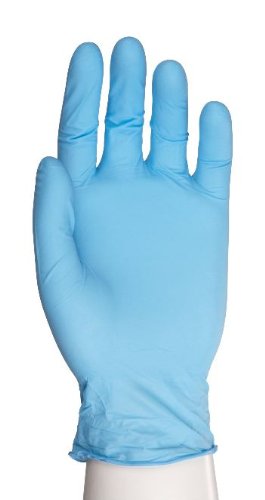Description
The Aurelia Robust 9389 nitrile, powder-free, disposable glove has better puncture resistance compared to latex or vinyl gloves, and is textured along the length of the fingers for improved grip compared to a glove with textured fingertips. This glove has a palm thickness of 5 mils and a finger thickness of 6 mils, and is 9.4" long from the tip of the middle finger to the edge of the beaded wrist cuff, which is 2 mils thick. Nitrile provides better elasticity than vinyl, better puncture resistance than latex or vinyl, better abrasion resistance than chloroprene, and reduces the likelihood of allergic reaction. This powder-free glove leaves no residue, reducing the risk of contamination compared to a powdered glove. This ambidextrous blue glove is suitable for dental and medical applications.
Specifications
Material
Nitrile, powder free
Palm thickness
5 mils
Finger thickness
6 mils
Cuff thickness
2 mils
Length
9.4"
Color
Blue
Minimum tensile strength
26.1 to 26.5 megapascals (MPa) before aging and 23.7 to 24.0 MPa after aging
Elongation before aging
550 to 595%
Elongation after aging
550 to 585%
Acceptable Quality Level (AQL)
1.5
Tensile strength, measured in MPa, is the amount of force required to rip a glove; the higher the number, the stronger the glove material. Elongation measures how much a glove can be stretched before it breaks. It is expressed as a percent of the original length of the glove at the moment of breakage; the higher the percent, the more the glove can stretch. AQL is an FDA quality specification for the defect rate in surgical and exam gloves. The FDA requires an AQL of 1.5 for surgical gloves and 2.5 for exam gloves.
Disposable and limited-use gloves are used in medical, forensic, scientific, food service, and industrial applications. Disposable gloves are commonly made from flexible materials such as latex, nitrile, chloroprene, and vinyl. While most disposable gloves are designed for use on either hand, some can be purchased in hand-specific models. They are offered powdered or powder-free; silicone or silicone-free; chlorinated or non-chlorinated; coated or uncoated; with a standard- or extended-length cuff; sterile or non-sterile; and with textured or smooth fingers, fingertips, and palms. A glove's abrasion, cut, and puncture resistance are defined by glove material and thickness, and may be improved with the use of exterior coatings. Abrasion resistance means the glove helps protect the hand from contact with rough surfaces. Cut resistance means the glove helps protect the hand from blades and sharp instruments. Puncture resistance means the glove helps protect the hand from objects such as needles. Chemical resistance means the glove helps protect the hand from certain chemicals, and varies by glove material.
Aurelia Gloves manufactures disposable gloves. The company, founded in 2000 and headquartered in Aurora, IL, meets International Organization for Standardization (ISO) standard 2859-1:1989.
Features
- Nitrile provides better elasticity than vinyl, better puncture resistance than latex or vinyl, and better abrasion resistance than chloroprene
- Better puncture resistance compared to latex or vinyl gloves
- Textured along the length of the fingers for improved grip compared to a glove with textured fingertips
- Palm thickness is 5 mils and finger thickness is 6 mils, and standard-length glove is 9.4" long and has a beaded wrist cuff that is 2 mils thick
- Powder-free glove leaves no residue, reducing the risk of contamination compared to a powdered glove


